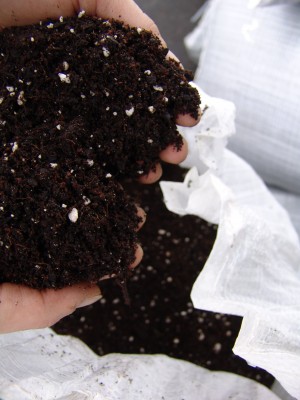Peat-Free Potting Soil
Last year at the Scott Arboretum, we made the change from a peat-based potting soil to a peat free-potting soil for our containers and all plants growing in our propagation area. The National Trust of the United Kingdom also transitioned to peat-free soil in an attempt to conserve the ecosystem from which peat is harvested.

The Scott Arboretum has been using a mix made by a local company, Organic Mechanics. This mix is a blend of coir (coconut fibers), worm castings, mushroom compost and rice hulls. All of these materials are by-products of other industries, while peat is not a sustainable material.
It takes at least 10,000 years for peat to form and it is harvested almost exclusively for the horticulture industry. In the UK nearly 94% of the lowland bogs have been destroyed or damaged due to peat harvesting. Bogs are a valuable wildlife habitat which supports many plants such as sundews, butterworts and bog rosemary, as well as rare and endangered species. They are also home to a myriad of dragonflies, butterflies and birds. In the United States most of our peat comes from peat bogs in Canada, which in addition to damaging those ecosystems, is shipped hundreds of miles.
Peat as a soil or garden additive brings very little nutrition to the soil and contributes to the drying out of the soil. Garden compost and mushroom soil are among the best and cheapest materials to enrich the soil.
Owner of Organic Mechanics, Mark Highland, has been testing and trialing peat-free soils for 10 years. He is continually changing his mixes to take advantage of local bi-products and create specialty blends for his clients. In fact, of the three mixes he offers to his clients, he now has a blend called the Scott Arboretum blend.





Jan Semler
Posted at 09:38h, 27 Maythanks for raising my consciousness about the depletion of peat–something I had not thought about.